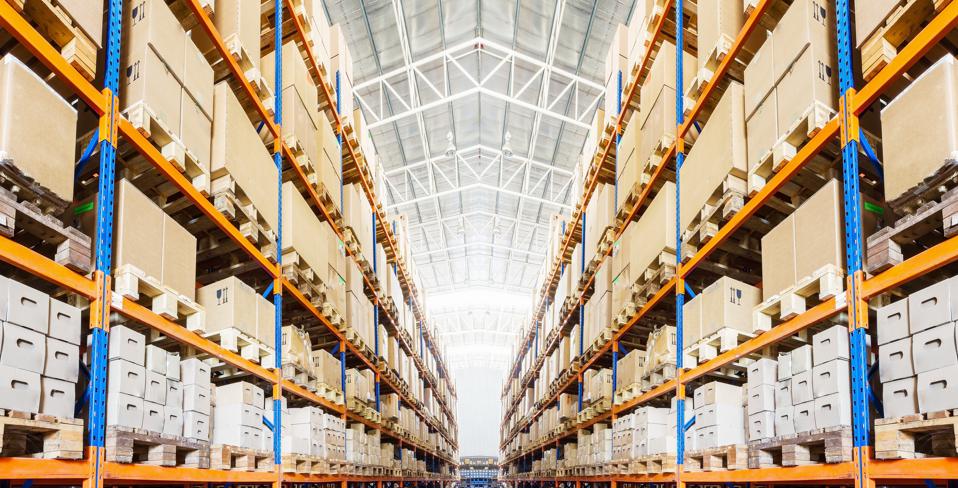
How did an asset class go from the ugly duckling of the investment world to the darling in such a short period of time? By now, almost all consumers are intimately familiar with online shopping. Online shopping or e-commerce has been the driver for the rapid acceleration of warehouse demand across the nation, resulting in an ultra-competitive environment for potential investors of these properties. Let’s take a closer look at the data to see why investors are so bullish on this sought-after asset class and evaluate where some opportunities lie going forward.
According to CBRE at the end of 2019, U.S. e-commerce sales accounted for 15% of the overall retail sales. For every $1 billion in additional e-commerce sales, the industrial market would need to deliver 1.25 million square feet of warehouse space to meet this demand. By 2030, e-commerce sales were projected to account for 43% of overall retail sales by 2030.
Fast forward to today, and those stats have been accelerated by Covid-19 as most consumers were forced to buy consumer goods and groceries online, many of whom were adopting shopping online for the first time. According to a recent report by JLL, retail e-commerce sales are expected to reach $709.78 billion this year up from $601 billion in 2019. By 2025, some experts believe that e-commerce sales will hit $1.5 trillion, which would create demand of nearly 1 billion square feet from e-commerce users over the next five years. It is important to note that e-commerce users only account for approximately a quarter of the overall industrial market, so the demand from all industrial users will be an even higher number.
E-commerce specific warehouse space requires up to three times the square footage than that of traditional brick-and-mortar retail stores as retailers offer more variety of products online versus in stores, both in the number of SKUs and the physical size of the product. E-commerce has much higher sale returns, and these returns account for a significant amount of the supply chain spend for companies. Distribution facilities handling returns may need up to 20% more space than a traditional facility. These reverse logistics operators often prefer the less expensive second generation space, also referred to as Class B, as many of the Class A building attributes such as higher ceiling height, excess parking and wider column spacing are not as necessary for product that will be stacked on the floor and moved out quickly.
Other industry sectors, such as automotive, tires, third-party logistics and manufacturing will consider second generation space, because of the increased demand and higher rental costs from e-commerce occupiers’ preference in leasing Class A space. The “rising tide lifts all boats” theory rings true as the demand will have a trickle-down effect to Class B space. Functional and well-located, Class B warehouse space will offer investors an excellent opportunity to achieve higher yields than Class A warehouse. As more tenants look to be as close to dense population centers as possible, we will likely see more infill, vacant big-box retail be converted to last-mile distribution space. Class A bulk distribution will continue to be the most sought after from institutional buyers, and though it has the lowest returns, it will be likely to continue to have the most consistent appreciation.
Conversely, Class C warehouse space and smaller, multitenant industrial that is typically occupied by smaller, local-credit companies is more likely to be negatively affected in the downturn. A recent Goldman Sachs report found that 84% of Payroll Protection Program recipients will exhaust funding by the first week of August, and only 16% are confident that they can make payroll without more assistance from the government. Only 37% believe they can survive another shutdown. While it’s too early to tell how well the smaller companies perform, it’s fair to say that many will struggle or not survive, making this type of investment more volatile.
During the peak of Covid-19, many companies utilizing a “just-in-time” distribution strategy to keep only the minimum amount of product needed onshore ran into severe shortages of product inventory. To alleviate these issues in the future, many companies will look at producing and holding a larger inventory. A 5% increase in business inventories in the U.S. could drive additional demand for 500 to 700 million square feet of warehouse space.
The reshoring of industrial manufacturing and distribution has been underway for the last decade but will likely accelerate due to Covid-19. The pandemic has magnified the importance of mitigating risks to global supply chains. A recent Thomasnet.com survey of approximately 1,000 US-based manufacturers found that 64% are likely to bring production back to North America. A gradual increase in production requires an increase in manufacturing and distribution facilities for not only manufacturers but also their suppliers. China has too large of a market share for American companies to pull out completely but look for companies to diversify into other Asian markets as well as Mexico, which could boost demand in Texas border towns.
Warehouse space demand used to be strongly correlated with consumer spending, so it was very much tied to the state of the economy. Presently, market demand is also correlated to how a consumer spends — online shopping — and this provides the industrial market a healthier, more stable, resilient source of demand. Investors are betting this demand will provide stability, rent growth and appreciation into the future.
Published by Forbes





